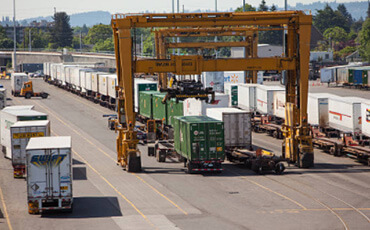
Permanent Mold Casting Process – The Guide
June 19, 2021
The Complete Guide to Investment Casting Manufacturing
August 15, 2021Die Casting: The Manufacturing Process
Die casting is a method of metal casting where molten metal is forced into a mold cavity by the use of very high pressure. There are many different types of die casting, characterized by which non-ferrous metals that are used in the process. Among the most common are zinc, aluminum, copper, magnesium, lead, or tin-based alloys.
These metals offer different advantages, which can be weighed depending on what the investment cast will be used for. For example, aluminum die casting is a lightweight material that allows for excellent stability for complex shapes. Zinc is also very common, as it is the easiest metal to cast and comes with high impact strength and long die life.
There are a few main steps in the process of die casting, which begins with the preparation of the die, which is done by spraying the mold cavity with a lubricant, which helps control the temperature and allows for easier removal.
Die Casting: Filling
After the dies are prepared, the next stage is called filling, where the molten metal is injected into the die with the high-pressure system. The mold cavity is filled and pressure is kept up until the cast becomes solid. The high-pressure nature of the injection allows the die to quickly fill, which is necessary to allow the entire cavity to fill up before any part of the casting becomes solid, helping allows for a smoother texture.
After the filling comes the ejection phase of the die casting process, where the dies are open and the shot is ejected into the ejector pins. These shots are different from casting due to the fact that there are often many cavities within a single die.
Finally, the shakeout phase separates the scrap from the shot. Often, the shakeout phase includes a special trim die, though it can also involve sawing and grinding. An alternative method is to is tumble the shots, which works if the gates are thin and able to be broken easily.
No matter the exact method used in the die casting process, it offers excellent dimensional accuracy and a smooth cast surface. It also offers thinner walks and rapid production rates, while still keeping very high casting tensile strength.
Die casting can be used in many different industries to create strategic advantages and efficiencies. For example, automotive castings allow you design flexibility and maximum durability all in a lighter weight cast. Die castings such as those done with aluminum allow for a superior strength/weight ratio that manufacturers are looking for.
At Intercast, we offer efficiencies all along the process, starting with our experienced team of engineers and our investment casting foundry. We work with you to create an investment cast that can be as simple or complex as needed, with production runs both large and small. To learn more about die casting or our investment casting process, please contact us today to request a quote and learn more. Let us help you grow your business in an efficient and effective way with quality investment casts.





